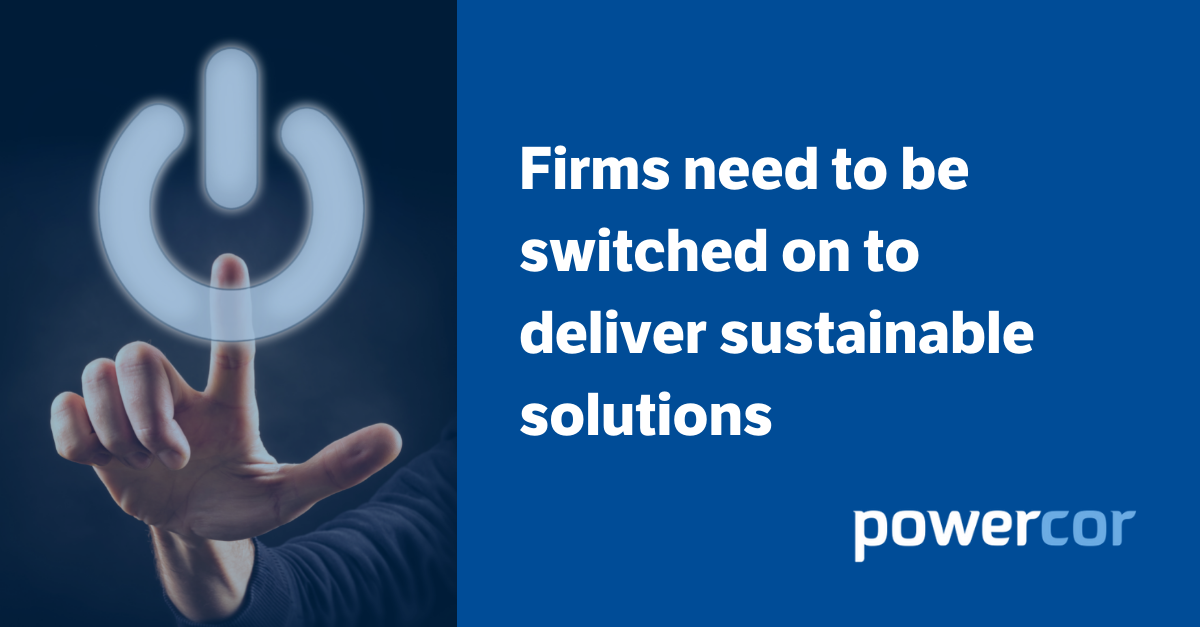The drive towards a more sustainable future has created a growing issue when it comes to power infrastructure. As Powercor’s Chris Wright explains it will create a dilemma for many organisations and businesses unless unless they are switched on to deliver sustainable solutions.
Recent months have seen a huge uptick in the demand for electric vehicle charging points (EVCPs), along with ground and air source heat pumps.
The drive for a more sustainable future has seen businesses and organisations such as schools look to move away from oil and gas heating systems to electric power. The issue which has quickly become apparent is that on many occasions the electrical switch systems simply cannot take the additional power required for the new systems.
It has led to many clients who have a desire to install pumps or chargers only to find that they don’t have the infrastructure to power it. The fact is that you cannot tell by looking at the switch gear what its capacity is. It needs to be accurately measured.
At Powercor we are increasingly visiting clients to verify that the additional capacity needs can be added or met.
If that capacity cannot be met by the current infrastructure, then there are steps that can be taken. Can we drive efficiencies in the current electrical usage which will release the necessary capacity? This can be achieved via the use of a range of energy-saving systems including LED lighting.
If the necessary power savings cannot be made then improvement to the infrastructure such as the addition of a transformer station for example is an option.
We have been working with clients to design new infrastructure systems to enable them to access the increased power capacity they need for the units they wish to operate. This often starts with the Distribution Network Operator (DNO) and a discussion on how systems can be designed to maximise the use of available power.
It takes experience. It is not a role that is in the capability of every electrical contractor and the solutions can often be both technical and complex.
A heat pump can require 1000 amps which is a significant additional capacity and can provide a huge challenge. The UK government is offering incentives to schools to use electric pump systems which would see the costs of the system repaid over its lifecycle.
We have worked extensively with some of the UK’s leading public schools for many years. When we have installed new power infrastructures in the past, we have utilised cabling that had latent capacity for potential growth. It is an issue for state schools which, due to the need to manage costs, often install cabling that meet their immediate needs rather than planning for the future.
Electric car use is set to grow and there are many firms now looking to enhance their car park facilities with the installation of electric charges but the power requirements per unit is a challenge.
The units can be in excess of 16 amps per unit, therefore the installation of 100 units would require an additional 1600 amp from their systems. Technology can play a part and we have been working with clients on the use of diversity systems that will limit the power usage to the available capacity.
Such systems will manage the distribution of the available power. For example, if the capacity is 100 amps the system will allow a full charge if a single charging point is in operation. If more charging points come online, the available capacity will be equally shared across those charge points in use.
The growth of sustainable energy systems is an opportunity for firms to redefine the way they power their properties. The opportunities are clear, but any plans need to start with a full understanding of your power infrastructure and whether steps need to be taken to ensure you have the capacity to cope.
Powercor is an award-winning company, delivering sustainable and efficient energy solutions for private and public clients. We have worked extensively with schools and businesses to upgrade their lighting and power systems and install the very latest solutions. With over 10 years’ experience in the energy efficiency sector, we empower customers to maximise their benefit from lighting and energy solutions whilst reducing energy consumption and saving money. With a dedicated team of technicians and engineers, we manage all of your energy needs – from lighting and sustainable energy to infrastructure and safety.







